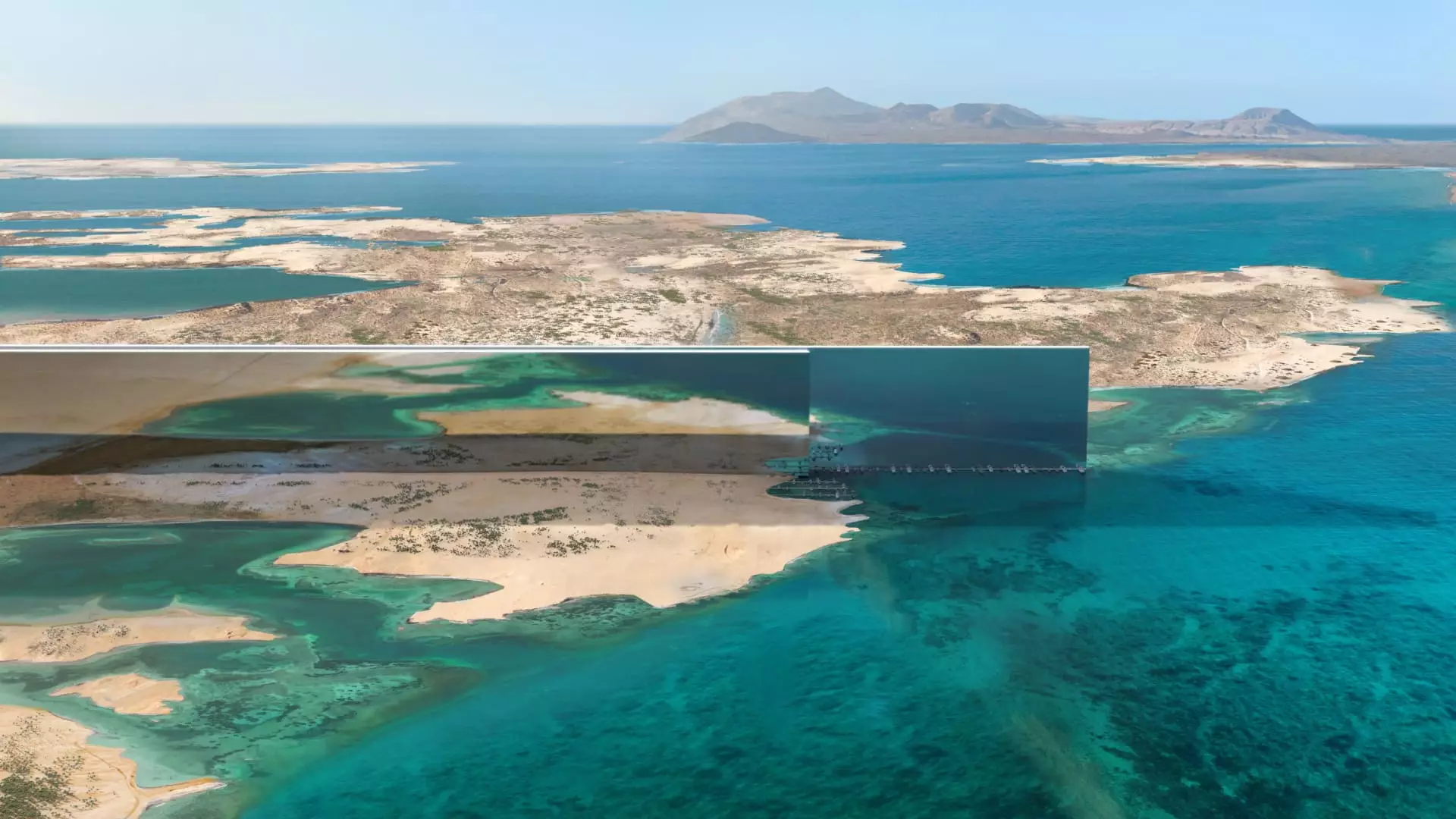In a bold display of vision, Saudi Arabia has long presented Neom as the pinnacle of a new era — a sprawling, hyper-modern metropolis designed to revolutionize urban living and redefine the country’s economic destiny. Yet beneath the shimmering surface of glass towers and high-speed raillines lies a sobering truth: the grandiosity of Neom’s plans may be more about spectacle than substance. As the Saudi government re-evaluates the feasibility of The Line, a flagship project within Neom, it’s clear that the kingdom’s once-unquestioned ambition is now colliding with economic constraints and technological realities.
There’s an undeniable hubris embedded in the narrative that Saudi Arabia could effortlessly engineer a city of nine million on the desert sands, powered by the latest AI and sustainability innovations. However, such lofty promises often rest on shaky assumptions — assumptions that insiders and critics alike are now scrutinizing with increased skepticism. The idea that technology will seamlessly scale to meet these grand visions is increasingly regarded as overly optimistic, especially in a world where geopolitical tensions and fluctuating oil prices threaten to upend even the most strategic projections.
The Saudi leadership’s unwavering belief in the transformative power of Neom reflects more than just economic foresight; it exemplifies a modern tendency to pursue grandiose projects under the guise of national pride and technological supremacy. Yet history is rife with cautionary tales where such hubris led to sprawling white elephants rather than thriving cities. The strategic review of The Line underscores a cautious pivot — an unwillingness to double down blindly, instead choosing to adapt and reassess amid mounting financial pressures and technological uncertainties.
The Cost of Overreach: From Vision to Reality
At its core, Neom’s challenge isn’t just about engineering marvels but about economic sustainability. With an estimated price tag surpassing $1.5 trillion, the project’s cost is colossal by any measure. Such a staggering investment would be astronomical even in the most stable of economies, let alone a nation navigating global economic headwinds, fluctuating oil revenues, and a widening budget deficit. It’s a stark reminder that even the most ambitious macroeconomic plans must contend with financial pragmatism.
The Saudi government’s decision to undertake a strategic review signals recognition that the project’s initial assumptions may have been overly optimistic. Reduced oil prices, now hovering around $70 per barrel, complicate the calculus further. The reality that revenue streams may fall short of covering the enormous expenses calls for a recalibration — a move from unbridled expansion to cautious realism. It’s a painful but necessary step that exposes the gap between aspirational blueprint and operational feasibility.
Furthermore, the images of cranes and construction sites may still symbolize innovation, but they also serve as monuments of over-enthusiasm. When projects freeze, shrink, or take longer to materialize, it’s less a failure and more an acknowledgment that human and technological limits must be respected. The strategy should not be rooted in unrealistic expectations but should focus on incremental progress and tangible benefits that can sustain the project in the long term.
moral Hazards and the Echo Chamber of Excessive Optimism
One of the most troubling aspects of Neom’s story isn’t merely the financial risk but also a cultural issue endemic to massive projects: the persistence of a “yes-man” culture. Critics suggest that consultants and advisors in Neom have, at times, perpetuated overly optimistic forecasts, fostering an illusion of inevitability that may not match reality. This phenomenon, where expectations are inflated to secure continued support and funding, risks creating a cycle of disillusionment and strategic missteps.
In the realm of center-left liberalism, it’s essential to emphasize the importance of accountability and honest assessment. Overpromising and underdelivering not only waste resources but erode public trust. For Neom to evolve as a sustainable venture, leadership must foster an environment where critical voices are valued and realistic hurdles are openly acknowledged. Trust in public institutions and private stakeholders hinges on transparency and a shared sense of ownership — qualities that have often fallen short amidst the hubris of megaprojects.
Additionally, the reported plans to trim back operations and implement layoffs resonate as a sign of pragmatic recalibration rather than defeat. They suggest a government and corporate leadership beginning to listen to the harsh realities instead of clinging to fantasies of rapid innovation. This shift, although painful, could set a healthier precedent for future development, emphasizing quality over quantity and sustainability over spectacle.
The Realpolitik of Development: A Chance for Authentic Progress
The re-examination of The Line and Neom as a whole presents an opportunity — a chance to redefine what success looks like in the context of ambitious urban development. Instead of blindly pursuing the largest and fastest, Saudi Arabia could learn to prioritize resilience, adaptability, and inclusive growth. This means investing in tangible, smaller-scale projects that foster local employment, environmental sustainability, and technological innovation tailored to the kingdom’s unique context.
In truth, the futuristic cityscape envisioned in Neom is less a reflection of technological inevitability and more a symbol of a destination that still requires humility. Progress, in the end, depends on acknowledging limitations, embracing iterative development, and rejecting the need to impress at every turn. For those who view Neom as nothing more than an empty spectacle, the strategic review could be seen as a necessary and overdue reality check. For skeptics, it’s an opportunity to push for genuine, meaningful transformation rather than lavish displays of progress.
In the broader geopolitical landscape, Saudi Arabia’s ambitious urban projects shouldn’t be viewed solely through the lens of economic waste or hubris but as undeniable proof that the kingdom is attempting to diversify and modernize amidst enormous challenges. The key for the future will be balancing aspiration with sustainability — recognizing that real innovation stems from a grounded, honest assessment rather than unrestrained bravado. Only then can Neom become a symbol of genuine progress rather than a cautionary tale of overreach.

